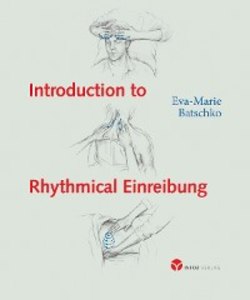Читать книгу Introduction to Rhythmical Einreibung - Eva-Marie Batschko - Страница 9
ОглавлениеEinreibung of the back while sitting
The patient sits upright on the massage table or a chair; the feet rest on a solid support (e.g. a stool or the floor).
A pillow (possibly two) lies on the thighs covered with a towel; the underarms rest on it, slightly angled, so that the shoulders are relaxed and an upright posture is supported.
The entire upper body (including arms and hands) is wrapped in a blanket, the ends of which overlap behind the back.
For uncovering the back, the two ends are opened up to the left and/or right so that they hang loosely to one side, with the shoulder joints remaining covered.
1. Downstroke on the back
Standing behind the patient, I initiate the downstroke simultaneously with the heels of both hands directly to the left and right of the seventh vertebra (Vertebra prominens).
Ill. 1
Then I dip both hands – fingers pointing towards the head – lightly into the tissue and then stroke downwards along the back, parallel to the spine.
At the lower end of the back I release first the heel of the hands, then the middle of the hands and finally the finger pads from contact with the skin (without bowing forwards!).
I now hold the collected warmth lightly enclosed on the inside of my hands.
With this gesture, I return my hands to the starting point below the scapulae with a slight arc in the air, in order there to open both hands again after dipping in with the heels of the hands.
In this way the flow of warmth is not interrupted.
In the downstroke on the back, my left hand always flows to the left of the spine, the right hand to the right.
Ill. 2
Ill. 3
This is done in three different, parallel movement flows, moving progressively further away from the spine laterally to the outside:
Stroke 1 moves inside close to the spine (but not touching it!).
Stroke 2 begins a hand’s width further outwards.
Stroke 3 moves so far out at the height of the armpits that the patient's sides are also touched. My hands always remain in flow and glide lightly following the shape of the body. In this dynamic they gradually turn a crescendo into a decrescendo.
EFFECT
The parallel nature of the back downstroke acts in a clarifying and ordering way, bringing about the perception of our own back.
The downward-flowing current of the hands creates a feeling of wanting to adopt an upright posture.
INDICATIONS
Acute life crises; psychophysical exhaustion; postural disorders; scoliosis; lordosis; kyphosis; apoplexy; paraplegia; obesity.
NOTE
The back downstroke is repeated, at most, three times, and only at the beginning of a back Einreibung.
